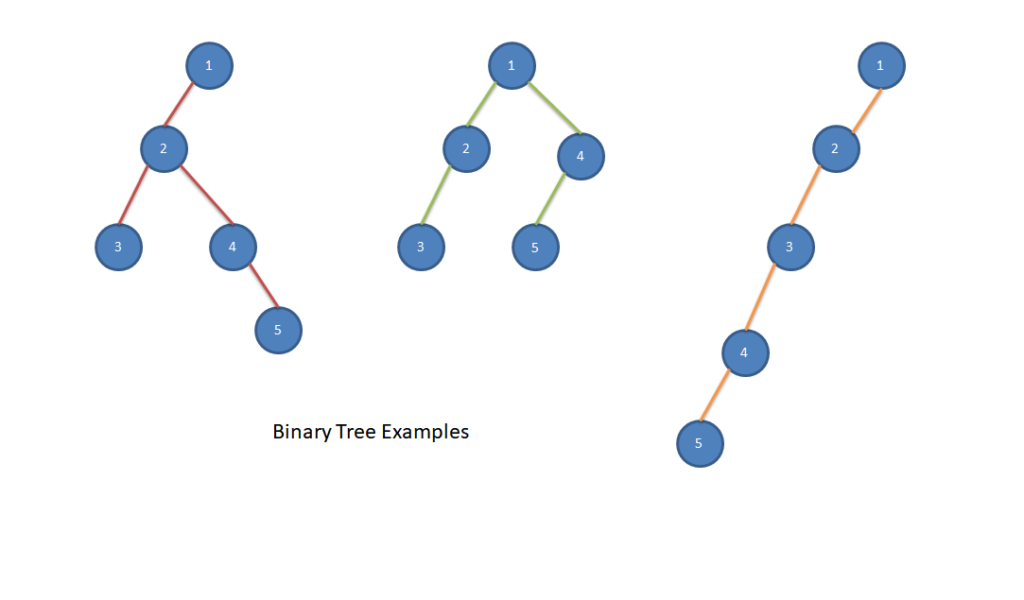Tree data structures are similar to Linked list in which each node points to multiple nodes instead of simply pointing to the next node. A tree is called Binary tree if each node in a tree has maximum of two nodes.
An empty tree is also a Binary tree. We can call the two children of each node as Left and Right child of a node. The node of the tree which has no parent is called the Root of the tree. Perhaps Binary tree is the most used tree data structure in the programming world.
Below are some examples of Binary Tree.

Let’s have a look into some of the most popular and useful topics in Binary Tree data structures.
- Binary Tree explanation
- Binary Tree implementation
- Binary Tree – Deleting a Node
- Inorder traversal of binary tree
- Preorder traversal of binary tree
- Postorder traversal of binary tree
- Level order traversal of binary tree
- Find Maximum and Minimum value in binary tree
- Find Height of binary tree
- Count leaf nodes in binary tree
- Convert binary tree to its mirror image
- Construct a binary tree from inorder and preorder traversal
- Construct a binary tree from inorder and postorder traversal
- Inorder successor of a node in binary tree
- Preorder successor of a node in binary tree
- Postorder successor of a node in binary tree
- Minimum Heap explanation
- Maximum Heap explanation
- Convert a binary tree to sum tree
- Lowest common Ancestor (LCA) in binary tree
- Boundary traversal of a binary tree